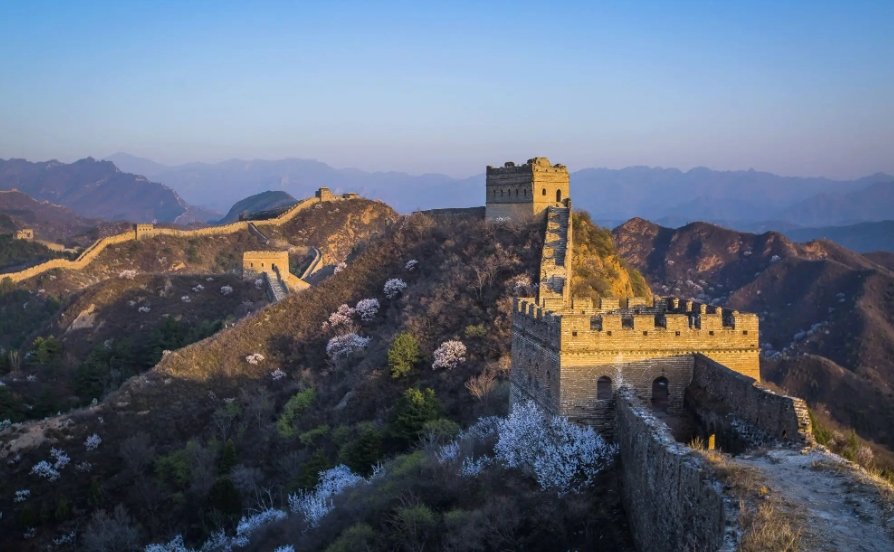
Reaching the Great Wall of China from Hong Kong: A Journey of Contrasts
While the bustling modernity of Hong Kong and the ancient grandeur of the Great Wall of China feel worlds apart, reaching this iconic landmark from the vibrant city is surprisingly achievable. Although no direct route exists, the journey itself becomes a fascinating exploration of China's diverse landscapes and efficient transportation systems.
1. Embark on a High-Speed Rail Adventure:
Your journey begins with a seamless transition from Hong Kong's urban heart to mainland China via the high-speed rail network.
- Hong Kong West Kowloon Station: Your starting point is the architectural marvel of the Hong Kong West Kowloon Station, a hub connecting Hong Kong to mainland China's expansive rail network.
- Convenient Ticketing: Secure your tickets online or at the station. Consider booking in advance, especially during peak seasons, to ensure availability.
- Smooth Boarding and Comfortable Journey: With modern amenities and spacious seating, the high-speed train offers a comfortable journey. Glide through picturesque landscapes, witnessing the transformation from Hong Kong's cityscape to mainland China's countryside.
- Arrival at Beijing West Station: After several hours, you'll arrive at the bustling Beijing West Station, one of the largest railway stations in China.
2. Navigating Beijing's Public Transportation:
Now in the heart of Beijing, you can experience the city's efficient and well-connected public transport system:
- Walk to Lianhuaqiao Station: From Beijing West Station, a short walk will lead you to Lianhuaqiao Station, a major interchange for Beijing's subway system.
- Line 10 Subway Ride: Board Line 10 of the Beijing Subway, a convenient and affordable way to navigate the city.
- Huoqiying Station Disembarkation: After a few stops, disembark at Huoqiying Station. The subway journey offers glimpses of Beijing's vibrant street life and architectural landmarks.
3. The Final Leg: Taxi to the Great Wall:
- Taxi Convenience: From Huoqiying Station, numerous taxis are available to take you directly to the Great Wall.
- Negotiating Fares and Specifying Sections: It's advisable to negotiate the fare beforehand and clarify the specific section of the Great Wall you wish to visit, as it stretches for miles.
- Embrace the Anticipation: During the drive, the excitement builds as you approach this architectural marvel, leaving behind the cityscapes and entering a realm of history and natural splendor.
4. Arriving at the Great Wall:
Finally, you stand before the majestic Great Wall, a testament to human ingenuity and perseverance. Explore its various sections, each offering unique vantage points and historical significance. From hiking along its ramparts to capturing breathtaking panoramic views, the Great Wall offers an unforgettable experience.
Reaching the Great Wall from Hong Kong is a journey of contrasts – from the modern cityscape to the ancient wonder. While the distance may seem daunting, the well-connected transportation systems and the adventure itself make it a worthwhile and rewarding experience.
Q&A:
1. How long does it take to get from Hong Kong to the Great Wall of China?
The journey time can vary depending on the chosen high-speed train and the specific section of the Great Wall you wish to visit. On average, it takes around 9-10 hours by train from Hong Kong to Beijing and an additional 1-2 hours to reach the Great Wall from Beijing.
2. What is the best time to visit the Great Wall?
Spring (April-May) and autumn (September-October) offer pleasant weather and fewer crowds. Summer can be hot and crowded, while winter offers a unique experience with snow-covered landscapes but can be quite cold.
3. Are there any other transportation options besides taking a taxi from Huoqiying Station to the Great Wall?
Yes, you can also take public buses from various points in Beijing to different sections of the Great Wall. However, taxis offer more direct routes and flexibility in terms of timing.
note: This return of all, without the author's permission, may not be reproduced